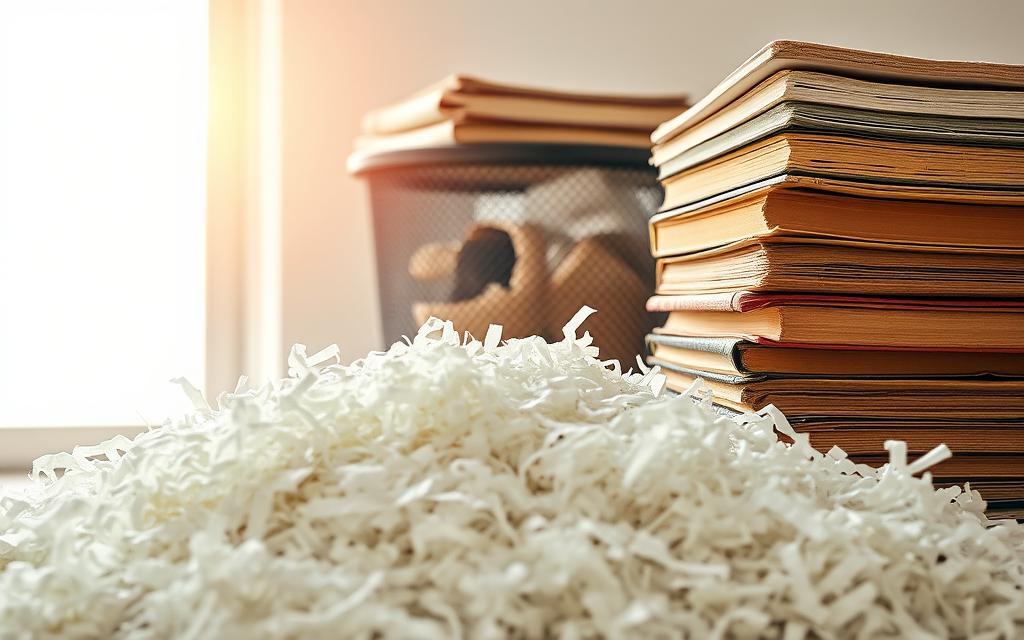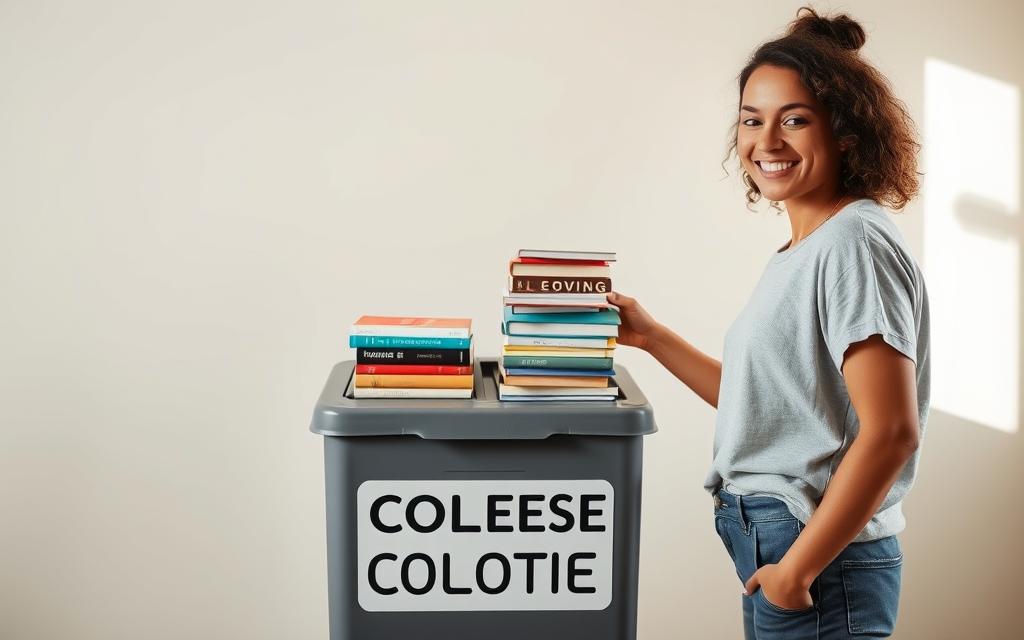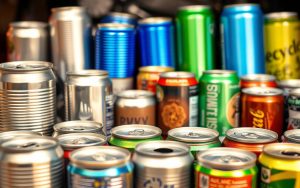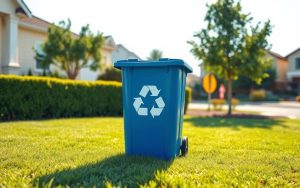While magazine subscriptions are declining, book sales remain steady, leading to an accumulation of printed materials in homes. This raises an important question: what happens to these items when they’re no longer needed?
Recycling paper products, including books, plays a vital role in reducing waste. For every ton of paper recycled, 17 trees, 380 gallons of oil, and 7,000 gallons of water are saved. Additionally, it prevents 3 cubic yards of landfill space from being occupied.
However, mixed paper, which includes books and magazines, faces challenges in the recycling process due to its lower commodity value. Despite this, most U.S. mills accept it, making recycling a viable option.
Beyond recycling, creative repurposing offers another sustainable solution. From donation programs to craft projects, there are numerous ways to give books a second life. This dual approach not only conserves resources but also preserves knowledge for future generations.
Introduction to Recycling and Repurposing Old Books
Books hold knowledge, but their disposal impacts the environment significantly. With paper accounting for 50% of curbside recyclables, sustainable methods are essential. Improper disposal leads to landfill overcrowding, with estimates suggesting only 18 years of capacity remain.
Recycling plays a vital role. Currently, 33% of new paper pulp comes from recycled materials. However, not all books are recyclable. Yellowed or tan pages, caused by oxidized lignin, cannot be processed. Wet or moldy items also fall into this category.
Paper fibers degrade after 5-7 recycling cycles, limiting their lifespan. Modern books with soy-based inks are recyclable, while antique or yellowed ones are not. Understanding these differences helps in making eco-friendly choices.
“Sustainable disposal of books not only conserves resources but also reduces landfill waste.”
Here’s a quick comparison of recyclable and non-recyclable books:
| Type | Recyclable | Non-Recyclable |
|---|---|---|
| Modern Books | Yes (soy-based inks) | No |
| Antique Books | No | Yes (yellowed pages) |
| Condition | Dry, clean | Wet, moldy |
By adopting sustainable practices, we can extend the life of paper products and reduce environmental harm. Donation programs and libraries also offer excellent alternatives for giving books a second chance.
How Do You Recycle Old Books?
Sustainable disposal of printed materials starts with proper preparation. Whether it’s paperback books or hardcover editions, understanding their condition ensures they are processed correctly. Here’s a step-by-step guide to make the process efficient and eco-friendly.
Preparing Books for Recycling
Before sending books to recycling centers, assess their condition. Paperback books can be recycled whole, while hardcover editions require removing the non-paper components. The cover and spine materials often contain glue or other non-recyclable elements.
- Separate the cover from hardcover books.
- Check the spine for adhesives or plastics.
- Ensure pages are dry and free of mold.

Finding Local Recycling Centers
Locating a nearby recycling center is essential. Use tools like the Recycling Locator to find facilities that accept mixed paper. States like PA, NJ, and DC have specific laws requiring paper recycling, making it easier to find compliant programs.
- Search for centers using your zip code.
- Verify if they accept magazines and books.
- Check operating hours and drop-off guidelines.
Recycling Wet or Damaged Books
Books exposed to water or mold pose challenges. Wet items alter the fiber structure, making them unsuitable for mills. Instead of recycling, consider donating damaged books to craft programs or safely disposing of them.
“Proper handling of damaged books ensures they don’t contaminate recyclable materials.”
- Dry wet books thoroughly before disposal.
- Donate to organizations like Better World Books.
- Dispose of moldy items in sealed bags.
Creative Ways to Repurpose Old Books
Transforming unused books into creative projects can breathe new life into them. Beyond recycling, repurposing offers innovative ways to give books a second chance. From DIY crafts to functional items, the possibilities are endless.
DIY Book Crafts
Turning pages into art is a popular trend. Pinterest showcases projects like wreaths, journals, and origami. These crafts not only reduce waste but also add a personal touch to your space. For example, folding pages into intricate designs can create stunning wall decor.
Another idea is using textbooks for dorm room decor. Stacking them as furniture or creating floating shelves with L-brackets adds functionality. These projects are perfect for school settings or small apartments.
Upcycling Books into Functional Items
Books can become practical items with a little creativity. Planters, tablet cases, and clock mechanisms are just a few examples. For hidden storage, hollow out a book to create a safe or knife block. These projects combine utility with style.
Organizations like AAUW use book sales to raise money for education programs. Donating to prison book programs, such as Books to Prisoners, also supports a good cause. These initiatives show how books can impact lives beyond their original purpose.
With a 200% year-over-year growth in upcycling tutorials, it’s clear that repurposing books is gaining traction. Whether for personal use or community benefit, these projects offer sustainable and creative ways to extend the life of books.
For more inspiration, check out this guide on repurposing books.
Donating Old Books for a Better Cause
Giving books a second life through donation supports communities and reduces waste. Whether they’re in good condition or slightly worn, your contributions can make a difference. From national charities to local libraries, there are many ways to ensure your books find new readers.

Charities and Libraries
Organizations like Goodwill and the Salvation Army accept books for resale, funding programs that benefit communities. Discover Books offers over 10,000 drop-off bins nationwide, making it easy to donate locally. Better World Books, a leading charity, donates millions of books annually to underserved areas.
Many libraries also welcome donations, using proceeds to fund STEM programs and other initiatives. Before donating, check the condition of your books. Most organizations prefer clean, dry, and intact items to maximize their value.
Little Free Libraries
Little Free Libraries provide a unique way to share books within your neighborhood. With over 150,000 locations globally, these small book exchanges encourage community engagement. Setting up a station is simple and fosters a culture of sharing.
“Donating books not only supports literacy but also strengthens community bonds.”
Here are some tips for donating effectively:
- Choose national charities with prepaid shipping labels for convenience.
- Partner with local libraries to support educational programs.
- Ensure books are in good condition to maximize their impact.
By donating, you contribute to a sustainable way of sharing knowledge and reducing waste. Your efforts can inspire others to do the same, creating a ripple effect of positive change.
Conclusion: The Benefits of Recycling and Repurposing Books
Recycling and repurposing printed materials offer significant environmental and economic benefits. By adopting these practices, we can reduce waste and conserve resources. For example, recycling one ton of paper saves 17 trees, aligning with UN sustainability goals.
Rental programs have already reduced textbook costs by 68%, making education more accessible. Additionally, paper mills are committing to increase recycled pulp usage by 2025, further supporting eco-friendly initiatives.
Projections show a 40% reduction in landfill waste over the next five years through effective recycling. Organizations like Better World Books are leading the charge, donating millions of books to underserved areas.
Join local “Adopt-a-Library” initiatives to make a difference. Together, we can extend the life of printed materials and create a better world. Consider shifting toward e-books and rentals as a preventive measure for a sustainable future.







